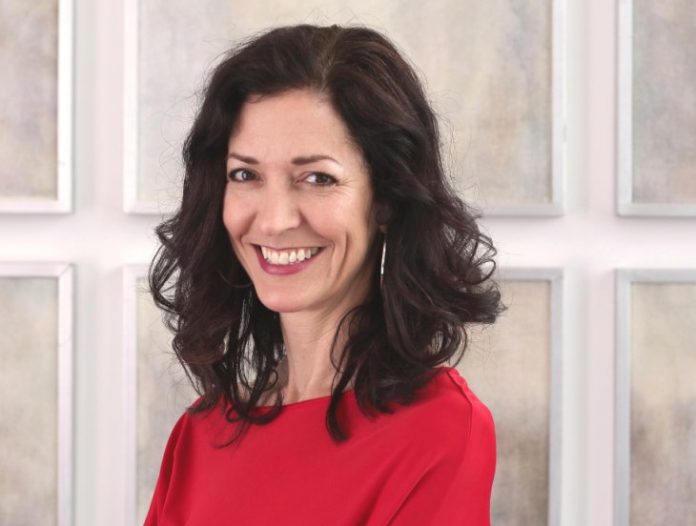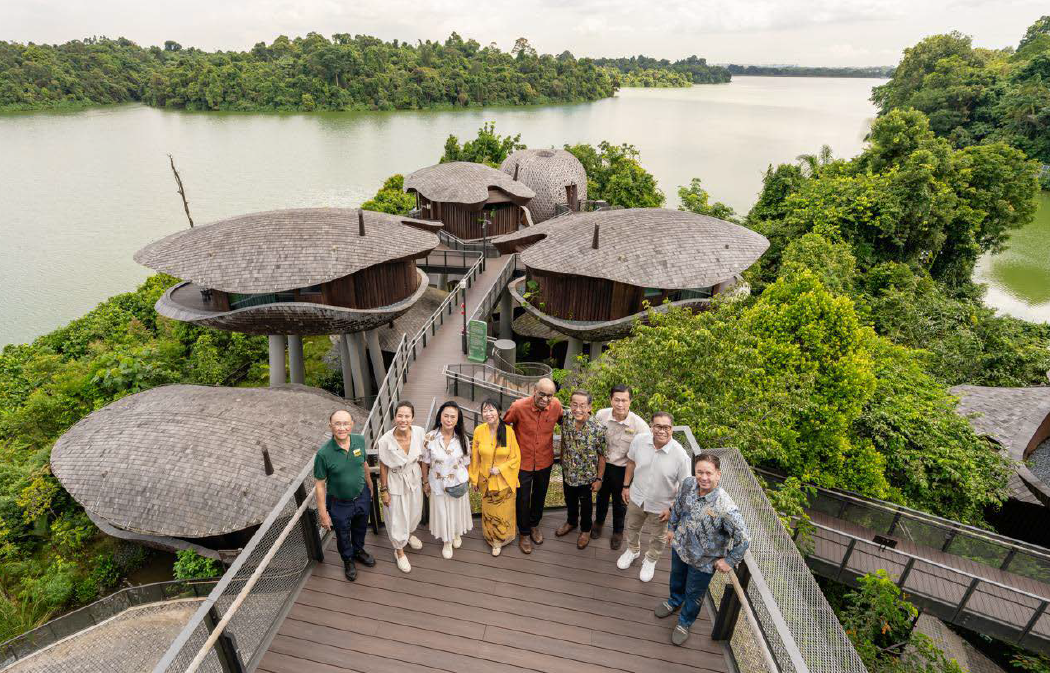Rachel Winokur, Senior Interior Designer, Elkus Manfredi Architects, founded a design studio in Los Angeles catering to clients ranging from celebrities seeking eco-elegant interior designs to developers of luxury hotels and residences from Saudi Arabia to Shanghai. Her award-winning synthesis of beauty and sustainability supports Elkus Manfredi Architects’ position at the forefront of sustainable architecture. We get in a conversation with her to understand what’s buzzing in the design space and what inspires her.
Is your design aesthetic conformist or non-conformist?
I would say, non-conformist. In my mind, there really aren’t any rules. I always try to approach a project with a fresh perspective. I don’t want to imitate anything else or to repeat myself and I don’t follow trends.
Doesn’t that get a little tricky?
I think it’s exciting and I think you get a better product in the end. For instance, eight years ago, I used reclaimed wooden panelling on the walls of a luxury spa in Los Angeles, way before this became popular. I didn’t want it to look too rustic, so I balanced it with a natural shell veneer, routing out the wood. It wasn’t the predictable route, and initially, the installer didn’t know how to do it. But, we figured it out and in the end, we had something truly original. I like to explore ideas; I wouldn’t call it tricky.
Contemporary or traditional, what influences your creations?
They play an equally important role, and when I draw on both, it makes for a much more interesting design. It’s important to be contemporary, to speak to our time, and adopt those things that appeal to people. It is also important to honour the environment and tradition of a property and its surroundings, such as local weavers, furniture makers, and artisans who speak the local idiom. Blending those elements enhances the space and honours the community. It is always a balancing act- you want to respect elements of tradition without being bound by them and you want to animate the design with elements that make people stay.
What’s your take on hotel designs in India?
I have seen spectacular hotel designs in India, especially in the last year or so, both in new construction as well as in restoration of existing properties. India’s rich heritage, diversity, and abundance of local flavours provide an infinite inspiration. Designers working in India have such a range of exquisite architectural elements and centuries-old crafts that can be adopted and reinterpreted to create a unique hotel experience. Using them can be a challenge, but it’s a wonderful opportunity to bridge thousands of years of history with what’s current today. The same is true for the many craft techniques that I see woven into India’s contemporary projects with elegance and respect. When used sensitively, these historical elements provide an opportunity for a designer to add a personal touch to a project while affirming the culture and history of the property. I love finding evidence and elements of India’s rich history in its contemporary hotels. At its best, hotel design in India affirms the country’s past while breathing new life into its present and future.
How much do location and context influence your design? And what about your personal history?
Context is always important. You need to understand why a guest is drawn to a certain locale or a particular area within that locale. You have to offer the guest a surprise, an experience they weren’t thinking they needed. Perhaps you’re at the ocean, and the guest can only imagine a beachside cottage. You need to take them to another level, to draw them out and help them experience even more.
I do draw my palette inspiration from the location. If it’s a beach location, there will be a lot of blues and greens. But they aren’t standard blues and greens; there’s always a twist, something unexpected. Every location has its own vibe. A hotel needs to tell a story.
I spent part of my childhood living on a sailboat on the New England coastline with my parents and sister. That experience certainly helped broaden my sense of space. Most people don’t understand how you can live on a boat but we had everything we needed. It taught me to step outside standard assumptions about what space should be. We also lived in semi-rural areas in New England and had pigs and cattle and chicken. Growing up like that gives me a unique foundation for working in the luxury sphere.
Which design projects at Elkus Manfredi attracted you to the firm?
I was very taken by the InterContinental in Boston. There was a unique design challenge there—the property’s site was on top of an underground highway with a vent stack jutting out of its centre. Solving that clearly required an impressive level of collaboration and some very inventive engineering. The firm managed to rid the skyline of an eyesore and create luxury housing and a full service hotel. It was a win-win for everyone.
The Peninsula in Chicago does so many things well. Elkus Manfredi took an incredibly complex project located at the heart of Chicago’s Magnificent Mile shopping district and focused the design on the guest experience. There’s a transforming moment on arrival at street-level that ushers the guest in, out of the urban buzz and into an oasis of calm. The retail and hospitality portions are beautifully knit together.
Aloft, as part of the Starwood Hotels in Boston’s Seaport District, offers a nice range of areas for people to gather. Each one of them is distinct, yet they relate. It all feels connected within a larger space that is still quite intimate. There’s also a pleasing rhythm to the space that’s very easy on the eyes. I like that the designers use local images from Boston, such as the John Hancock Tower and the Zakim Bridge, and they achieve a very comfortable balance of textures with the warm wooden ceilings, polished concrete floor, and raw concrete columns. The energy of the design and the fun elements pick up on the urban buzz of the location. It’s fun, it’s sophisticated, and it is LEED-certified, which of course is very important to me.
What design trends do you envision for the year?
For quite a while, I’ve noticed a general softening in design– a softening in materials, in form, in the objects, and in the vernacular we use. I think the industrial style is in eclipse. People are now looking for more of a residential feel in hotels, a sense of coming home. They still want that 5-star service, but they also want to relax and feel comfortable.
Minimalism is still very strong, but more and more we’re seeing artisanal and handmade elements that celebrate locally made products and locally sourced materials. There is a growing awareness around how things are made and that consumer decisions can help save a culture, a trade, and help support a local family. This social awareness is manifesting itself in hospitality design and even apartment building owners want to use local artists to liven up their corridors and public spaces. Hotels purchase carpets and decorative items, the origins of which they can trace and where there’s no sacrifice on aesthetics. With ethical sourcing, I can provide a beautiful design that falls within my client’s budget, while at the same time creating a meaningful experience for the hotel guest.
Hotels these days are very strong on sustainability. How are you achieving that in your projects?
My middle name is Carson, after Rachel Carson, who wrote the book Silent Spring. I’ve worked for several firms and had my own firm as well before coming to Elkus Manfredi. At each stop along the way, I’ve been able to step back and ask myself what’s important to me and the answer has always been the same- sustainable design. It is always possible to create something that looks great and is healthy for the guests, healthy for the greater population as well as the environment.
How difficult is delivering your best while staying within the client’s budget?
There is always a fantastic design solution within any budget. I think budgets are helpful for a designer. You may have to be more creative, perhaps use a little more strategy, but budgets and schedules are not limitations. They provide a structure within which everyone can work.
In design, having unlimited options can sound great, but it also means you can explore those options forever. Having a budget limits those options, keeps everyone on the same page, and lets you know where the client is comfortable. It’s easier to make decisions. When someone tells me that the sky’s the limit, I start to feel lost.
What are the challenges you encounter most often in your work?
The pace of change in technology is a challenge. In a long-term design project, you might design a reception desk around today’s equipment but by the time the project is realised, that equipment has changed size. Another challenge is that the way people do business is constantly changing. In airlines, for example, there are more kiosks at check-in and fewer people to talk to. There will be similar changes for hotels. It’s an opportunity to try and anticipate the way a hotel will greet its guests and how the guests want to be treated in the next 10 or 15 years.
Another opportunity is trying to remain current. There are, of course, traditional hotels that offer the same services and aesthetic over a long period of time, but the smaller boutique hotels have to always offer something new and fresh. Their guests may still want something familiar and comfortable, but they’re also looking for the latest and the best in hotel design.










